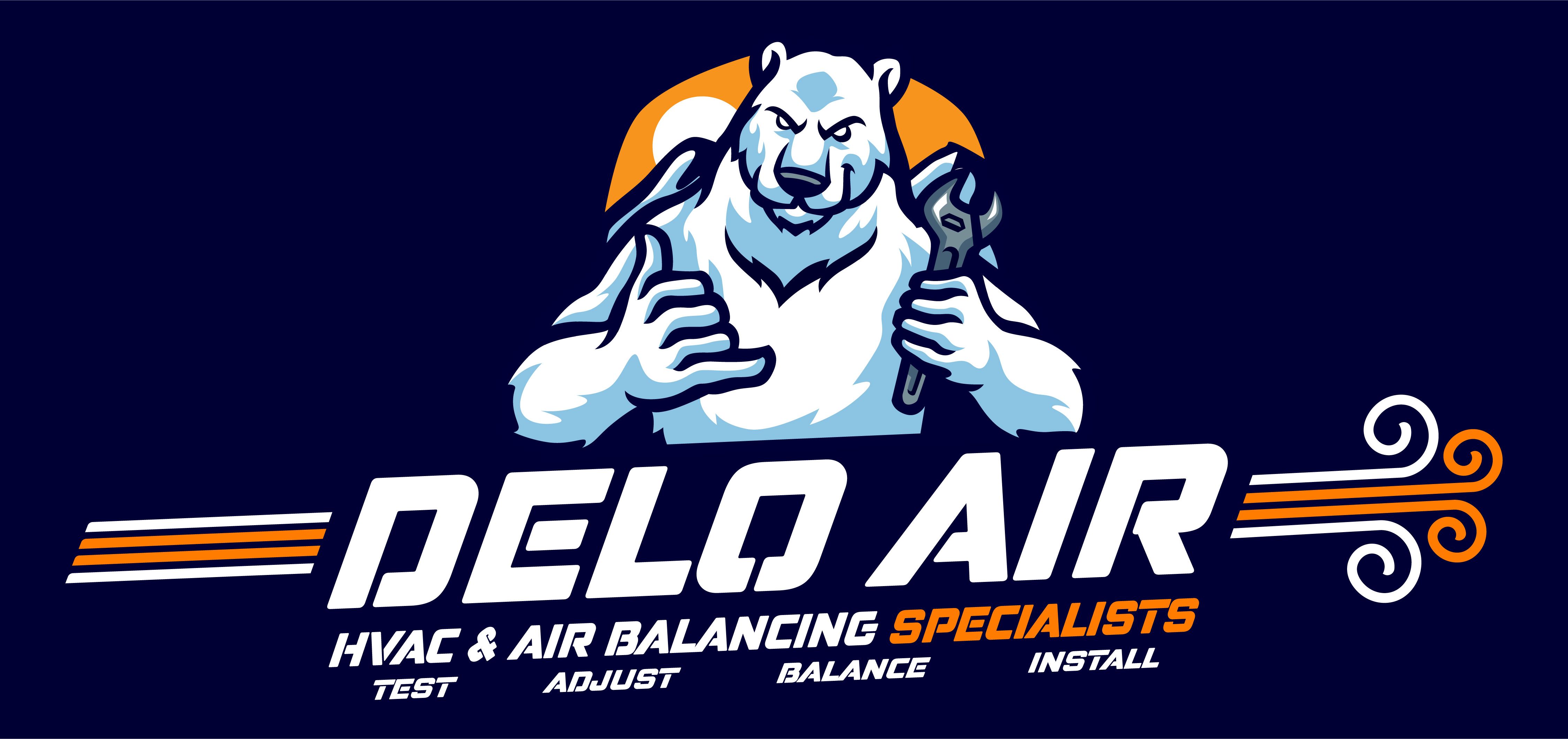What Is Air Balancing (and Why The City Requires It)
Published February 24, 2022
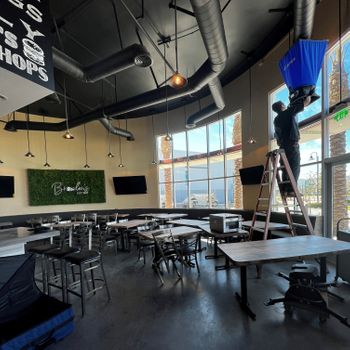
If you are a reader searching on the topic of air balancing, or the reason it is needed for your building, chances are you are either a new restaurant kitchen owner or, you just finished a new commercial HVAC project.
If you're a homeowner and are here simply to learn more about the benefits of air balancing your home's AC ductwork, our article also covers just that.
No, we are not sidekicks, we just know air balancing.
Air balancing is the combined process of validating that a new air-moving device is installed correctly and adjusting it to meet the correct airflow it was engineered to produce or exhaust out.
Air Balancing ensures systems are operating to their fullest efficiency and will reach their maximum longevity.
In this article, we are going to clear up a lot of confusion around the topic of air balancing.
Doing so by answering the most common questions and concerns people have when they are in the position of needing an air balance done for the first time.
However, before we dive into the deep end of air balancing let's first explain and discuss its definition.
On This Page:
What Is Air Balancing?
Air Balancing is the method of testing, adjusting, and balancing, also known as T.A.B. With unique testing equipment, air balancing techs precisely measure airflow from air moving devices, compare them to specifications supplied by a mechanical engineer, and adjust airflow to meet these specifications.
Law, whether enforced by the city or health department, requires an air balance to be performed on almost all commercial air moving devices such as HVAC units, Kitchen Hoods, exhaust fans, and so on; and in California, regulations are at their peak.
A certified air balance report is provided to the city inspector as proof the air balance was completed.
To learn more about these reports and why you need one, visit our page: air balancing reports.
To summarize, an air balance is the combined process of validating that a new air-moving device is installed correctly and adjusting it to meet the correct airflow it was engineered to produce or exhaust out.
Now that we have a decent grasp on air balancing, let's examine the different forms of balancing, or areas it is used most.
Restaurant Air Balancing
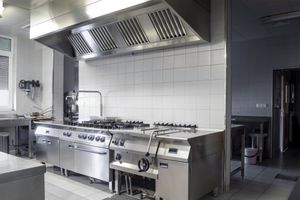
Every restaurant around the world has one thing in common, the kitchen exhaust hood.
Every commercial kitchen has one installed to pull all the heat and smoke out, to keep workers and customers comfortable and safe.
When an exhaust hood is installed, a make-up air unit (MAU) is always installed along with it to re-supply the building with the air it loses from the exhaust hood. This is done to keep the building's pressure under control.
Keeping pressures in a restaurant equal is crucial.
Ensuring the Exhaust hood and Make-up air unit are balanced with one another is the reason a restaurant air balance is required.
An air balancer's job is to test and adjust the exhaust hood to achieve the air removal and velocity that it needs to successfully extract all the smoke from the kitchen during peak cooking times.
After adjusting the exhaust hood to the correct airflow, the balancing tech then adjusts the MAU to supply the building with the same amount of air that is being exhausted out, this procedure is done to ensure the restaurant's building pressure is equal.
Due to the importance of building pressures being equal, the city health department requires a restaurant air balance report to be provided prior to all restaurants opening, also, when there are any major renovations performed.
Commercial HVAC Air Balancing
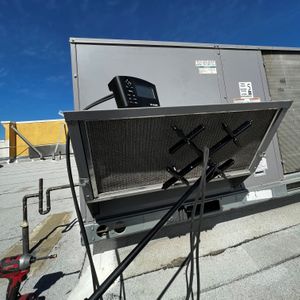
Commercial HVAC air balancing is very similar to residential, however, there are extra factors that widely differentiate the two.
For example, commercial air balancing for HVAC systems requires testing and balancing the outside air, which in most cases, is an economizer.
The image here is a snapshot of testing an economizer on a commercial HVAC packaged unit.
This device is what allows fresh air to enter a commercial building to improve the indoor air quality and ensures the carbon monoxide levels never rise in the breathing space.
This step is extremely important.
Another factor that differentiates it, is the type of equipment used on commercial AC systems for larger projects.
Commercial air conditioning units are usually rooftop packaged units (RTUs), which involve quite a few more steps to adjust and balance.
The reason for this is that packaged units usually have motors that use pulleys and belts to move the indoor fan.
Adjusting the pulleys and belts requires much more intricate adjusting compared to a residential system simply having speed taps to control the system's total airflow.
Why is commercial HVAC air balancing required by the city?
The reason air balancing is required for new HVAC projects is sadly due to the fact that air conditioning contractors have become notorious for cutting corners and not installing new equipment to engineered specs.
This notorious issue creates short equipment lifespans and excessive energy consumption due to poor installation.
To help aid this problem, air balancing became mandatory.
An air balancer ensures systems, are installed correctly and balances airflows evenly across a building.
Air Balancing also helps reduce energy consumption and assures there are no hold or cold areas within a building.
Certified Air Balance Reports
When air balancing is requested, they request an air balance report to provide.
These reports include recorded data collected during an air balance test.
An air balance report includes airflow readings, amperage readings, models, serial numbers, pulley data, velocity numbers, and additional specifications that help show how a system is performing.
These air balance reports can only be compiled and provided by a certified D-62 air balance contractor.
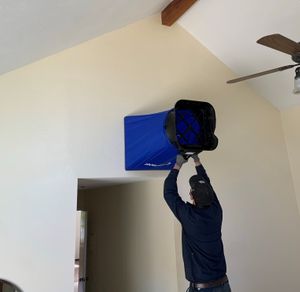
Air Balancing A Residential Home
Air balancing a residential home is very similar to air balancing commercial HVAC systems.
What happens during a residential home air balance?
Before arrival, an air balance tech should have required airflows for each supply and return register.
These required airflows are determined during a home load calculation before installation or simply arriving for an air balance.
These numbers are engineered to cool down each room efficiently and at the same rate as each other, ensuring there are no hotter or colder rooms than others.
Upon arrival, the first thing an air balance tech does is confirm the size of the AC equipment installed.
Knowing the size of equipment installed lets the balancer know what the total system airflow should be.
For Example, in this picture, one of our air balance techs was performing an air balance on a newly installed home AC system we completed.
We will call this project the Smiths Home for the sake of this explanation.
The Smiths Home was installed with a 3-Ton central air conditioning system, which our load calculation determined their home needed.
Now as a certified air balancer, our tech in the example above knows the following:
- 1-Tons = 400 CFM
- 2-Tons = 800 CFM
- 3-Tons = 1200 CFM
- 4-Tons = 1600 CFM
- 5-Tons = 1800 CFM
Knowing this, he concluded that Smiths Home's newly installed AC needs to be producing a total of 1200 CFM.
Now that our air balancer knows the size and amount of total CFM needed, he begins the air balance process by taking the first set of initial readings at each supply and return registers and documents these readings on a report to refer to.
After his initial readings, which total 1590 CFM, roughly 132% over design.
For efficiency reasons, our air balance tech lowered our fan speed to get closer to 1200 CFM.
After adjusting fan speed, his readings were the following: (numbers are rounded for the sake of simplicity)
- Bedroom 1
- CFM Read = 185
- CFM Needed = 125
- Bedroom 2
- CFM Read = 175
- CFM Needed = 125
- Master Bedroom
- CFM Read = 275
- CFM Needed = 200 CFM
- Living Room
- CFM Read = 230 CFM
- CFM Needed = 390 CFM
- Kitchen
- CFM Read = 100 CFM
- CFM Needed 125 CFM
- Dining
- CFM Read = 125 CFM
- CFM Needed = 125
- Bathroom
- CFM Read = 100 CFM
- CFM Needed = 50 CFM
- Master Bath
- CFM Read = 105 CFM
- CFM Needed = 50 CFM
- Total CFM Read = 1295 CFM
- Total CFM Needed = 1200
Much closer to our needed 1200 CFM.
Next, our tech began adjusting each room to achieve all the required airflows in each room.
Lowering CFMs in rooms that are high begins to redirect the air into rooms that are low.
Finally, once each room was balanced to its required CFMs, a final system static pressure report was completed to ensure the Smiths Home's AC system was running smoothly and there were no issues.
To conclude, air balancing a residential home is extremely important. It guarantees a home AC is running smoothly and there are no hot or cold rooms within the home.
What separates residential and commercial air balancing is that residential air balancing is not legally required or requested by the city.
The 3 Fundamentals Of Air Balancing
As we have learned, air balancing is also known as TAB, testing adjusting, and balancing.
What may not be known is that these are the core items of air balancing.
Let's break them down individually to grasp what is involved in the air balancing process.
If you have patience check out this detailed video lecture to learn more about this topic.
1. Testing
Testing is the procedure of collecting airflow data with unique testing equipment such as a capture hood or (balometer), velocity matrix, rotating vane anemometer, manometer, voltmeter, tachometer, etc.
The data collected is then used to determine if airflow entering or exiting a location, such as a register or an HVAC system, needs to be increased or decreased.
Testing also refers to collecting data at equipment, such as voltage readings, static pressure readings, and fan RPM readings.
All information gathered during the testing process is used for the second fundamental of air balancing...
2. Adjusting
Using all the testing data collected, it's time to begin adjusting the registers and equipment to the airflows demanded on the mechanical plans.
For every construction project, there are a set of mechanical plans created by an engineer.
These plans list all equipment, layouts of the ductwork, size of equipment, location of equipment, and the most important item for an air balancer, the "required airflows".
Every supply (air entering) and return (air exiting) register, as well as equipment, has a required air flow listed next to it.
This is a reference specifically for the air balancer.
With this information and the information gathers during the testing phase, the air balance tech can begin adjusting the airflows to the correct amount listed in the mechanical plans.
3. Balancing
Balancing is the end goal of the first and second fundamental.
While the "Balancing" step might sound redundant, it isn't.
This step is the main goal from the moment the balancer steps onto a project.
Balancing might seem like clockwork if the mechanical plans are present and systems are the correct size as listed on the plans, however, in rare cases, HVAC equipment may not match the equipment on the plans.
When HVAC systems are different sizes than shown on the plans, a new method of balancing is required... proportional air balancing.
Proportional air balancing is the method of balancing a forced-air system producing either less or more airflow than required by the mechanical plans, doing so by using calculated percentages instead of listed values.
By calculating the percentage a supply drop requires compared to the total system airflow, an air balancer can successfully proportionally balance a system.
The 4 Benefits Of Air Balancing
Yes. We know it's required.
We know what air balancing is.
We understand the main categories of air balancing.
We have come to accept that it's needed, now, let's discuss the benefits of air balancing.
Yes, it's a requirement but there are many benefits that should encourage you to want an air balance regardless of it being one.
For example...
1. Energy Savings
Air balancing ensures systems are at their maximum operating conditions to achieve the energy savings they are designed for.
The concern of saving energy is one of the largest reasons air balancing has become a requirement for new HVAC systems.
Where Does the energy savings come from?
New HVAC systems are always going to come with the newest most-efficient technology.
However, no matter how efficient new AC equipment is, its efficiency is only guaranteed by its installation.
When equipment is installed outside of design specifications, system performance and efficiency suffer greatly.
Adjusting airflow, refrigerant charge, system pressures, and energy consumption to parameters within the manufacturers' design specifications allows the system to perform to its maximum efficiency, resulting in high energy savings.
Without the air balancing step, a system could not reach its fullest potential to save energy, it would suffer and could even result in energy consumption to be two to three times more than it was designed for.
2. Indoor Air Quality
Indoor air quality (IAQ) is a major concern to all building owners, tenants, and employees because it can affect the health, mood, and productivity of building occupants.
When discussing indoor air quality, let's focus on how air balancing can single-handedly improve it in an entire office by controlling carbon dioxide levels within it.
When people congregate in an enclosed space, room, office, or building, carbon dioxide (CO2) levels tend to climb.
This is because when people breathe, they consume oxygen and exhale carbon dioxide.
If the same air is being circulated and no new fresh air is introduced in the breathing space, CO2 levels will just keep climbing and climbing.
High levels of CO2 can cause all sorts of issues to people when exposed for longer periods of time, such as a decline in productivity, health, and concentration.
To increase the indoor air quality commercial HVAC systems are equipped with economizers that are designed to allow new "outside" air to enter the building under the operation of the systems fan.
During an air balance procedure, the air balancing technician commissions, tests, and adjusts, the economizer to successfully bring in the correct amount of air into the breathing space to control CO2 and CO levels from climbing, thus, improving the building's indoor air quality.
3. System Longevity
HVAC equipment manufacturers claim the life expectancy of new systems is around 15-20 years.
Of course, that is under perfect "operating conditions".
Any statistic provided by a manufacturer, including system longevity, is calculated under perfect operating conditions, or within all designed running parameters.
So can a system reach 15-20 years if it is running outside of these parameters?
No.
As a matter of fact, it isn't uncommon for systems to last less than 5 years.
This is because many systems are not commissioned correctly and runway out of their designed parameters from the very start.
One of the most significant benefits of an air balance is you have the assurance your system will be set to run at all its designed parameters and is on track to its maximum longevity.
4. No Hot Or Cold Zones
Every homeowner or building owner has experienced that one room that always seems to be too cold or too hot.
Why does this problem even occur?
To understand why this happens it helps to understand that air takes the path of least resistance, in other words, it goes where ever it wants.
Air from a forced air unit (an AC unit) that isn't balanced will usually favor either the closest rooms or the last rooms in a duct branch, and, sometimes it can seem random.
Then you have the room that is either too far to receive air or is simply not the ideal "path of least resistance", resulting in little to no air reaching it.
That room would be your "too hot or too cold" room.
So how is this problem fixed?
It is fixed through air balancing!
Using dampers that are installed in air ducts, air balancers can properly balance air entering each room to the exact amount it needs, eliminating any hot or cold zones within a building.
To conclude, air Balancing has many great benefits that should make you want it regardless of it being a legal requirement.
It should not be viewed as another requirement that is a waste of money, it should be viewed as an investment that is going to save you money and headaches now and in the long run.
How Air Balancing Is Performed
How is air balancing done?
Air Balancing technicians use specifically designed airflow reading instruments to read air exiting or entering outlets, then will adjust the airflow to the required airflow specified on the mechanical plans provided by the engineer.
If there are no specifications of "required airflow" for a commercial air moving device, certified air balance technicians are to calculate the "required airflow", based on the specific application and use of equipment.
For example, commercial kitchen exhaust hoods are known to pull massive amounts of air from a building; however, a "massive amount" isn't random.
The air that the kitchen hood removes is measured precisely and is adjusted accurately to engineered specs soon after its installation to keep the kitchen in healthy operating conditions.
If specifications are unavailable, the air balance tech then determines cooking equipment being used and the size of the exhaust hood, to determine the "required airflow" for that specific kitchen's needs.
The exhaust fan is then balanced to those specs accordingly. (More will be explained below)
Check out this video for a little further explanation on the air balancing process.
Can I Do My Own Air Balancing
In terms of an air balance report, and providing it to the city, no, a building owner or installing contractor is not allowed to perform the air balancing on their contracted commercial project.
Air balancing has to be done by a trained professional not only to ensure the procedure is done correctly but also because an air balance report is to only be provided by a legally certified individual.
The certified air balancing individual must also be a third party that is unaffiliated to the owner or installing contractor to be accepted by the city.
Visit our blog page for further topics to learn about, or visit our contact page to schedule an air balance today!
Contact US
Ask us a question or schedule an air balance today!
